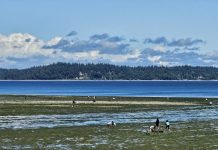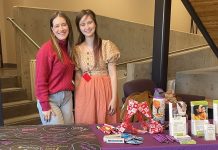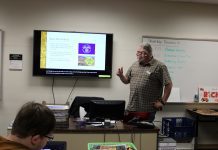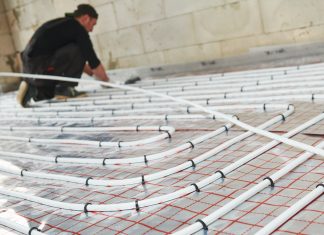Submitted by the Whatcom County Health Department
Since the beginning of the COVID-19 pandemic, making decisions about how to interact with the world—from everyday activities to life-changing transitions—has been complicated and, at times, confusing. With each choice, we weigh the risks and benefits, trying to keep the risk of getting COVID-19 as close to zero as possible. COVID-19 is a risk for all adults. But because older people have a greater risk of being hospitalized or possibly dying from COVID-19, calculating risks can be a particularly challenging process for them.
Reopening brings complex choices
Back in March, our stay home order made decision-making clear-cut: unless your job or activity was essential, everyone stayed home as much as possible, especially older adults. Now that we’re reopening our community under the phased Safe Start Washington Plan, some older adults are finding pandemic safety and wellness choices increasingly complex. The Safe Start plan strongly encourages people at high risk for COVID-19 disease to stay home during Phases 1, 2, and 3 unless they are participating in an activity allowed in the current phase.
A variety of questions come up around how to choose the safest way through this new COVID-19 world:
- How do I decide when a visit to my doctor or dentist is necessary?
- Is it safe to go out for a walk in public places?
- When should I wear a mask?
- Since hair salons are open, should I get a haircut?
- Is it safe to visit with my children and grandchildren?
- Should I attend an in-person meeting or event?
Making decisions in a COVID-19 world
To make sound decisions, it won’t be enough to only think about the risk. Answering these types of questions requires thinking about both the potential risk of exposure to COVID-19 along with the benefit of the activity. Emily Oster, Professor of Economics at Brown University, suggests using a risk/benefit graph as a useful tool to think about how important an activity is to you and whether its value is worth the risk.
On a recent blog post, she shared her personal preferences as an example of how she prioritizes activities. As you can see below, she recognizes having child care and seeing grandparents as higher risk but also very important to her. She’s more likely to “spend” her risk budget on these activities. Going to bars is another activity she considers high risk but has little value to her so she’s unlikely to choose to spend her risk budget on such an outing. Bicycling is low risk for her, but because she doesn’t enjoy it, it’s not a high benefit activity for her.

Develop a plan to reduce the risk of valued activities
Figuring out which activities are most valuable to you is probably a pretty straightforward process. Calculating the risk level of activities can be more challenging. In general, the more people you interact with, the more closely you interact with them, and the longer that interaction, the higher the risk of COVID-19 spread. Think about:
- How many people will you interact with?
- How long will you be interacting with people?
- Will you be outdoors or indoors?
- Can you keep six feet of space between you and others?
Staying active is highly beneficial for physical and mental health. Want to take that walk with a friend? Good news! Outdoor activities are safer. Keep the risk low by choosing a route that allows for a six foot distance between the two of you. Wear a mask if you can’t maintain the six foot separation from your friend or others.
Keeping your social circle small continues to be an essential way to reduce the risk of COVID-19 infection. And yet social interactions typically rank high in value for each of us. How to keep the risk low for such a high benefit activity?
- Choose a very small number of people to interact with in-person on an ongoing basis. A good number is five at most, preferably fewer.
- Have an honest conversation about safety measures you’ve both been practicing, such as wearing a face covering, visiting outside, and keeping a distance of six feet. Revisit your agreements on a regular basis.
If you have a chronic or acute medical or dental concern, having an appointment with your health care or dental provider is likely to be a high value activity for you. Don’t delay getting care due to safety concerns. Whether you’re following up about high blood pressure, cancer care, or a new cough, you and your provider can make a safe, lower risk plan for staying healthy using telemedicine or in-person visits. If you need an in-person visit, provider offices are following extra safety practices such as limiting the number of people in a waiting room, requiring all staff, patients, and visitors to wear masks, and maintaining strict sanitizing standards.
Getting groceries and other basic supplies is certainly a high benefit activity at any age. To keep the risk low, consider asking a friend or family member to fill your grocery order for you. Many grocery stores continue to offer curbside pick up for groceries ordered by phone or online. If you need assistance for food or meals, check Whatcom Unified Command’s resource page.
Whether you’re a grandparent or a beloved elder, one of the hardest parts about limiting contact during the pandemic has been staying apart from the little ones in our lives. Visiting virtually by phone or video remains the safest way to stay in close contact.
- Consider setting up a regular schedule to read books together.
- Plan an art project that you can do simultaneously in both households.
- Flip your phone camera around and share family photo album pictures.
If you decide to see each other in-person, to keep the risk low:
- Consider asking visitors who plan to stay in your home to quarantine for 14 days prior to their arrival.
- Limit hugs and close contact to people who have done a full quarantine.
- Keep the social circle small during the visit and only include people who are taking precautions, like wearing a mask and keeping a six foot distance from the non-household circle.
- Plan outdoor activities where it’s easy to keep a safe distance from others.
- Have everyone wash hands frequently and clean high touch surfaces regularly.
- For many of us, sharing food equals love. But right now it’s best to have people outside your household bring their own snacks or meals.
Stay connected
We can’t get the risk of infection to zero, but we can think carefully about balancing the risk of chosen activities and their potential benefit. When making plans that involve older adults, keep in mind the level of spread in our community, your own personal situation, and the risk for you and your family. We cherish our connections with elders. They are the keepers of our culture, history, and language. Their long view on life provides some reassurance and tips for resilience during these distressing times. For that, we thank them.
For more information, see the CDC guidance about COVID-19 for older adults. For local resources for older adults, please see the Northwest Regional Council on Aging and the Whatcom Council on Aging.









































